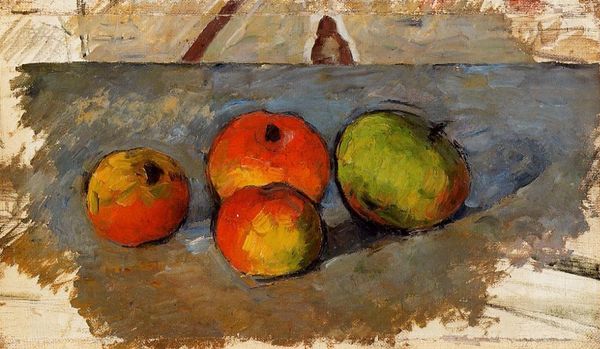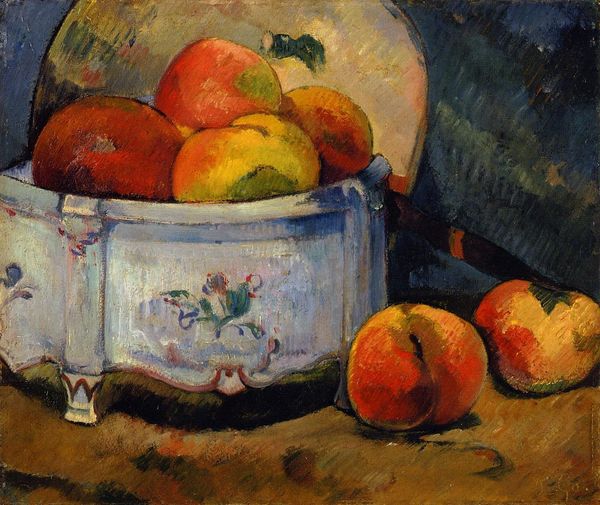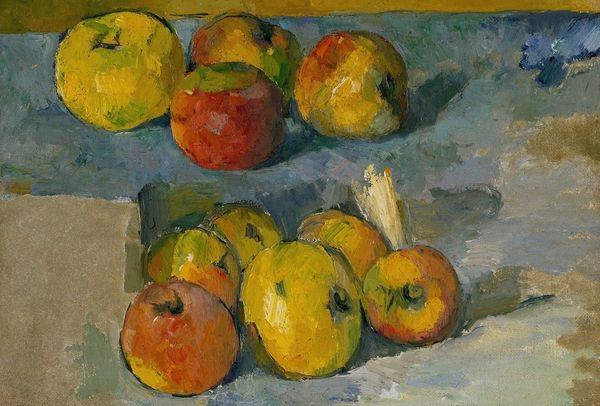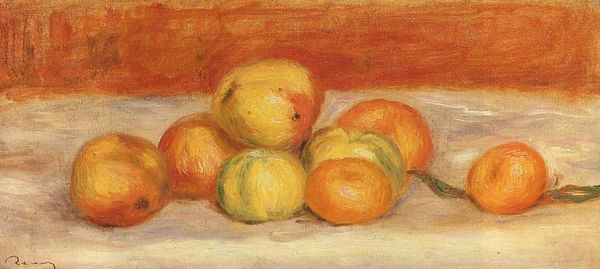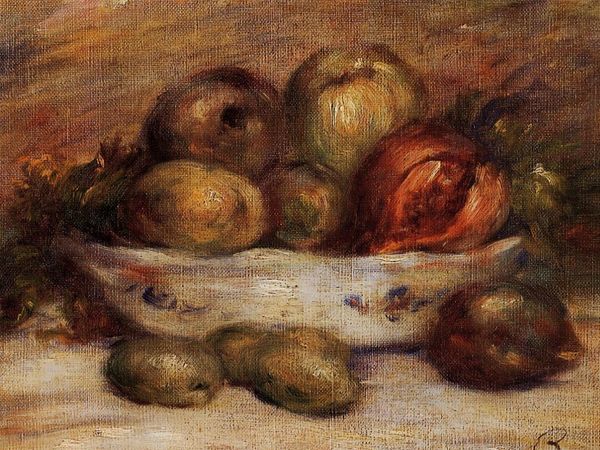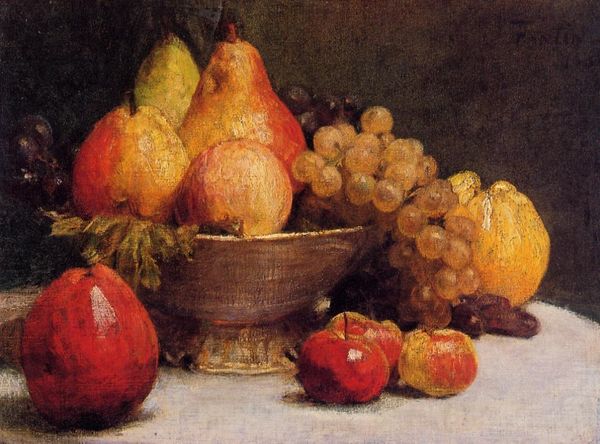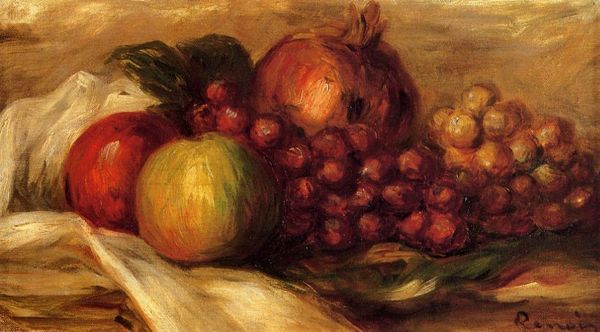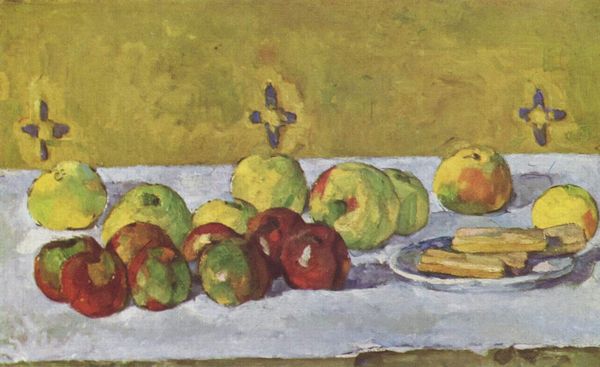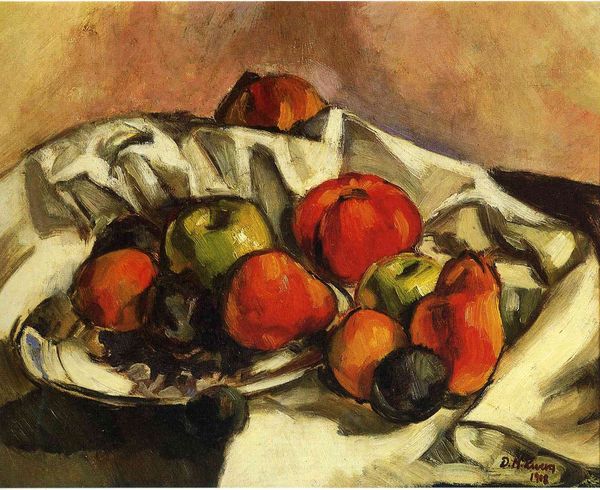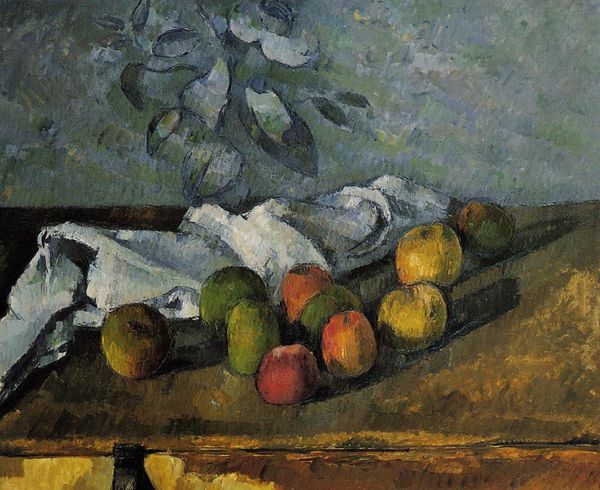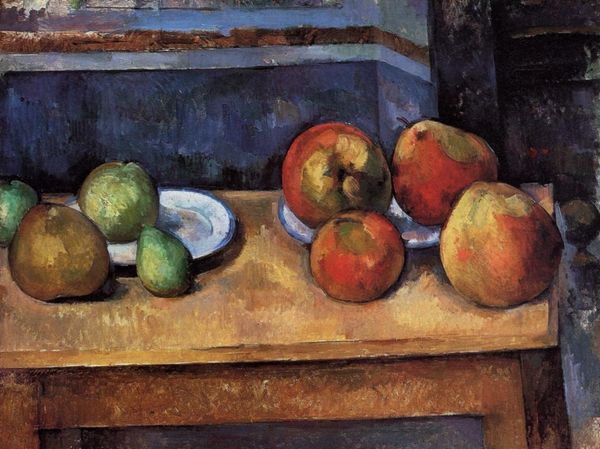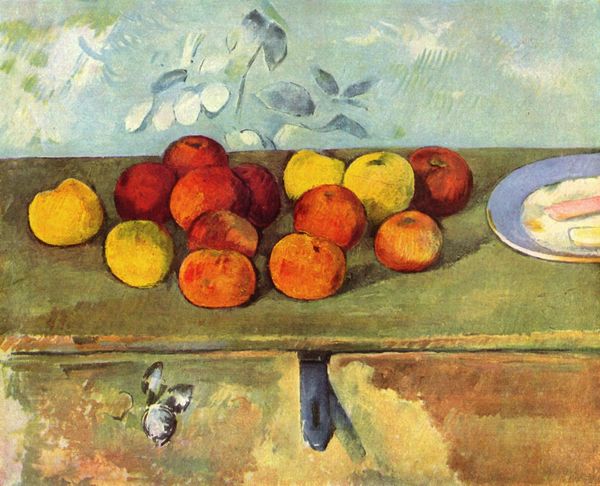
painting, oil-paint
#
table
#
food
#
painting
#
impressionism
#
oil-paint
#
landscape
#
figuration
#
form
#
oil painting
#
fruit
#
plant
#
post-impressionism
Copyright: Public domain
Curator: Immediately, I’m drawn to the rough textures. There's a simplicity, almost rawness, that contrasts with the inherent order of a still life. Editor: Indeed! Let’s explore this unassuming yet resonant painting. This is "Apples in Bowl" rendered in oil on canvas by Paul Gauguin in 1888. Though it currently resides in a private collection, it presents some interesting context of its time. Curator: Context, yes, but what about its inner voice? The apples, mostly confined to their bowl and partially draped cloth, almost feel confined. There’s a certain melancholy hinted at, despite the vibrancy of the fruit. What kind of symbols did fruit portray in this historical time? Editor: Gauguin painted this during his time in Pont-Aven, Brittany, a period where he sought a more "primitive" and authentic artistic expression away from Parisian academicism. He wanted his own form, a rejection of the stiff academy which was prominent during that time, but does the color or form influence those "symbols"? Curator: The forms definitely carry weight! The flattened perspective and bold color choices suggest a departure from realism, focusing instead on emotional and symbolic content. Each fruit, a closed world of genetic information. But the symbols carry so much meaning through art history and its representation in the social context. It begs the question of, who owned these apples and for what use? Editor: And it should! Think of the social dynamic – this painting surfaced amidst broader artistic movements critiquing industrialization and celebrating the beauty of nature and everyday life. Its an ordinary bowl, sitting on common fabrics with ordinary fruit! How accessible was the subject in real life versus owning a painting like this in 1888? Was this accessible for everyone or simply for the high society who had access to artists such as Paul Gauguin? Curator: Right, the painting embodies a yearning for a simpler life, imbued with raw emotional honesty through humble objects such as the fruits represented in the artwork. It invites introspection as it gives us that connection of human nature and the need for authenticity! Editor: Indeed. Viewing "Apples in Bowl" through the lens of social and artistic rebellion enriches our understanding. Now it is with greater perspective to the artwork and its influence. Curator: It’s almost like those unassuming apples have opened up into a whole world.
Comments
No comments
Be the first to comment and join the conversation on the ultimate creative platform.
